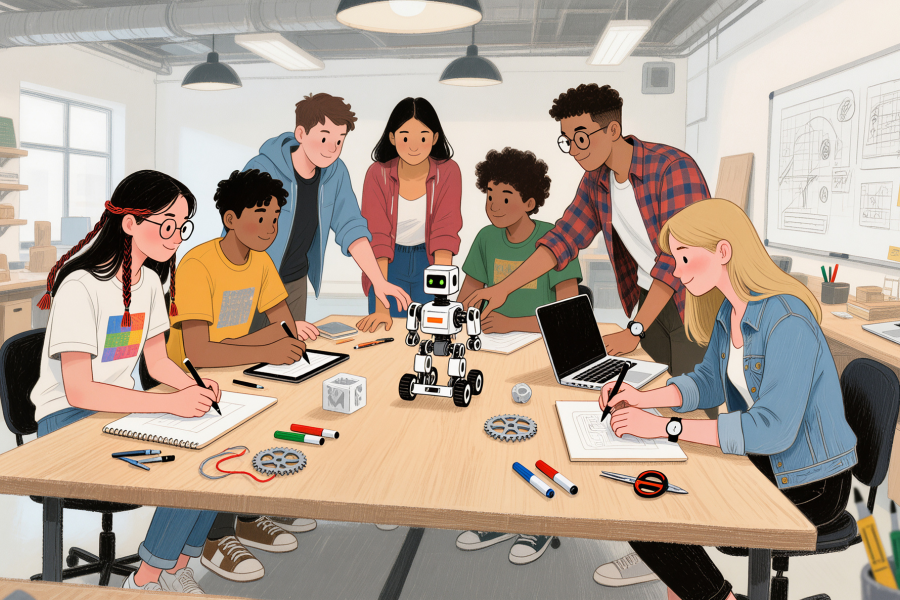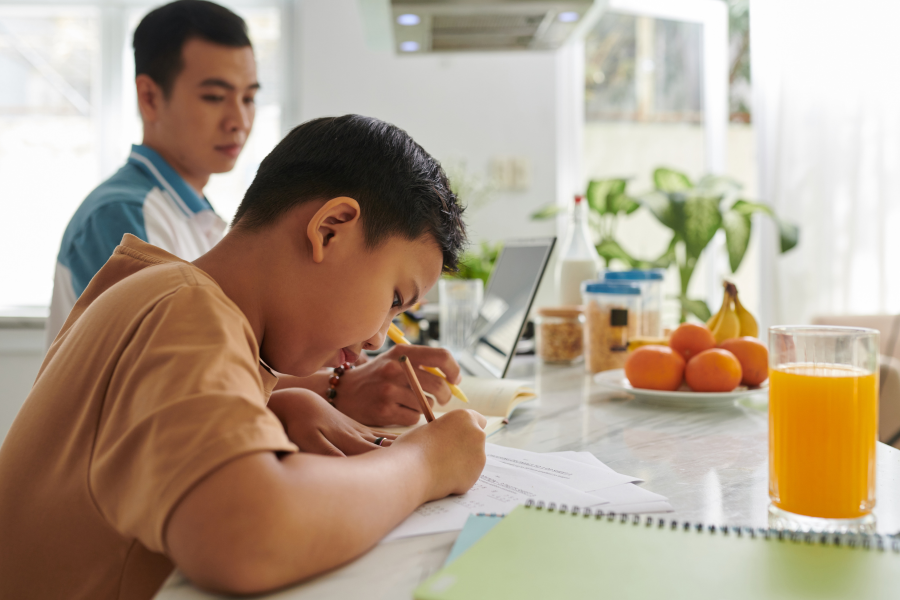Introduction
Have you ever tried to learn cycling by reading a manual? Sounds funny, right? Just like cycling, some of the most valuable lessons in life can’t be learned from textbooks alone. That’s where experiential learning comes in—it’s like learning by living.
At the Best CBSE School in Suraram, this concept is not just a teaching method—it’s a way of life. In this article, we’ll explore how experiential learning is changing the face of education and giving young minds the tools they need to succeed in real life.
Table of Contents
| Sr# | Headings |
|---|---|
| 1 | What is Experiential Learning? |
| 2 | Why Traditional Learning Needs a Boost |
| 3 | The Science Behind Experiential Learning |
| 4 | Benefits for Young Learners |
| 5 | Real-World Application: Why It Matters |
| 6 | Types of Experiential Learning |
| 7 | Role of Teachers in Experiential Learning |
| 8 | How CMR International School Suraram Excels |
| 9 | Success Stories: Students Who Blossomed |
| 10 | Integrating Technology and Experiential Learning |
| 11 | Creating Emotional Connections with Learning |
| 12 | Building Life Skills Beyond Academics |
| 13 | Challenges and Solutions |
| 14 | Parental Involvement in Experiential Learning |
| 15 | The Future of Education: Learning by Doing |
| 16 | Conclusion |
| 17 | FAQs |
1. What is Experiential Learning?
Experiential learning means learning by doing. Instead of just listening to lectures or reading books, students engage in real-life tasks, experiments, or projects. Think of it as education that moves from the pages of the textbook into the real world.
2. Why Traditional Learning Needs a Boost
Traditional learning often focuses on memorization and rote learning. But in today’s fast-changing world, this isn’t enough. Kids need to understand concepts deeply and be able to apply them creatively.
Example:
Reading about plant growth is good. But planting a seed, watching it sprout, and observing how sunlight and water affect it? That’s powerful learning.
3. The Science Behind Experiential Learning
Experts say we retain:
- 10% of what we read
- 20% of what we hear
- 90% of what we do
This model, called Dale’s Cone of Experience, shows why hands-on learning is so effective. It taps into multiple senses, making learning stick.
4. Benefits for Young Learners
Here’s how experiential learning shapes young minds:
- Boosts critical thinking: Kids learn to analyze and solve problems.
- Builds confidence: They gain self-assurance by doing things themselves.
- Encourages collaboration: Group activities promote teamwork.
- Improves communication: Explaining their projects helps kids express ideas clearly.
- Ignites curiosity: Real-world exposure leads to more questions and discoveries.
5. Real-World Application: Why It Matters
Imagine a student learning math through a school shop project—calculating profits, making budgets, and managing sales. These are practical skills they’ll use forever.
At the Best CBSE School in Suraram, we believe that making education relevant to everyday life prepares students to succeed in any field.
6. Types of Experiential Learning
There isn’t one fixed way. Experiential learning comes in many forms:
- Project-based learning: Solving real-world challenges.
- Field trips: Learning outside the classroom.
- Role plays and simulations: Stepping into someone else’s shoes.
- Experiments: Testing scientific principles hands-on.
- Service learning: Community projects that build empathy.
7. Role of Teachers in Experiential Learning
Teachers act more like facilitators or mentors. They:
- Guide students instead of lecturing.
- Encourage questions and discussions.
- Help students reflect on what they’ve learned.
At CMR International School Suraram, our teachers are trained to balance academic content with exploration and creativity.
8. How CMR International School Suraram Excels
Welcome to CMR International School Suraram, your gateway to quality education!
We offer the renowned CBSE curriculum from Nursery to Class XII and integrate experiential learning throughout. Our commitment to academic excellence is matched by our dynamic learning approach.
Key Facilities Supporting Experiential Learning:
- Smart Classrooms: Interactive tools enhance digital engagement.
- Science and Computer Labs: Students explore with hands-on experiments.
- Performing Arts Center: Creativity blossoms through music, dance, and drama.
- Sports Infrastructure: Leadership and discipline grow on the field.
- IT Labs: Coding, simulations, and tech-driven learning.
- Safety Measures: Secure and supportive environment to learn freely.
Contact us:
📞 +91 7993017777 / +91 7993567777
📧 digitalsuraram@cmrschools.in / cmrinternationalsuraram@gmail.com
9. Success Stories: Students Who Blossomed
Take Ananya, a class 6 student who hated math—until she joined a project to design a board game using fractions and percentages. She now dreams of becoming a game designer.
Or Aarav, who built a water-saving model for the school garden. He won an inter-school innovation award.
These stories are common at the Best CBSE School in Suraram, where passion and purpose grow together.
10. Integrating Technology and Experiential Learning
Technology plays a vital role:
- Augmented reality (AR) makes biology classes feel like surgery rooms.
- Coding platforms encourage students to build apps and games.
- Virtual tours allow history students to explore the Colosseum or the Great Wall.
It’s learning beyond borders.
11. Creating Emotional Connections with Learning
Experiential learning isn’t just intellectual—it’s emotional.
When students are emotionally involved:
- They care more.
- They remember more.
- They grow more.
This bond between learning and feeling is what makes experiences unforgettable.
12. Building Life Skills Beyond Academics
It’s not all about grades.
Through experiential learning, students build:
- Leadership
- Time management
- Resilience
- Conflict resolution
These are skills that future-proof a child’s success.
13. Challenges and Solutions
Challenges:
- Time constraints
- Curriculum rigidity
- Lack of resources
Solutions at CMR Suraram:
- Creative scheduling
- Training teachers in new methods
- Leveraging our expansive 2000+ acre campus
We believe every challenge is an opportunity in disguise.
14. Parental Involvement in Experiential Learning
Parents play a big role:
- Encouraging curiosity at home
- Volunteering in school projects
- Attending exhibitions and field trips
When schools and families work together, magic happens.
15. The Future of Education: Learning by Doing
The future isn’t in memorizing answers—it’s in asking better questions.
Experiential learning prepares students for a world that values creativity, adaptability, and empathy. It’s the bridge between education and life.
Conclusion
Experiential learning is more than a method—it’s a mindset. At the Best CBSE School in Suraram, we empower students to learn by living, explore by doing, and grow by experiencing.
If you want your child to not just study but thrive, CMR International School Suraram is the place to be.
FAQs
1. What makes experiential learning better than traditional learning?
Experiential learning engages students through real-life tasks, making lessons more memorable, practical, and enjoyable.
2. How does CMR Suraram implement experiential learning in daily classes?
Through project-based learning, labs, field trips, and creative classroom activities supported by smart infrastructure.
3. Is experiential learning suitable for all age groups?
Yes! Even young children benefit through hands-on activities, storytelling, and play-based learning.
4. Do experiential methods help in academic performance?
Absolutely. When students understand deeply and enjoy learning, academic performance improves naturally.
5. How can parents support experiential learning at home?
By encouraging questions, involving children in daily problem-solving, and supporting their creative projects and interests.



